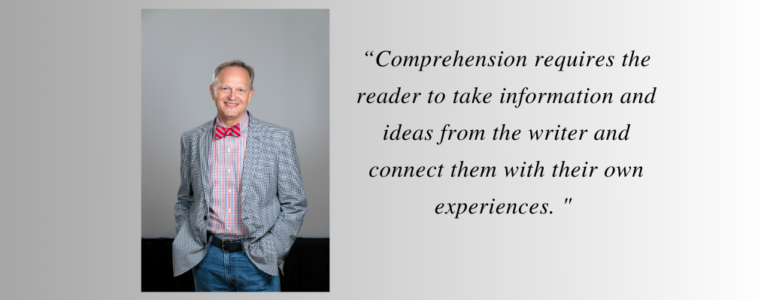By Lester Laminack
If your school experience was like mine, comprehension was an after-reading activity. Many of us remember reading first, then answering questions to prove that we understood. For too long, it seems that comprehension has been seen as the process of giving the right answers to someone else’s questions. To be clear, I see nothing wrong with answering questions. However, consider what is required of the one who asks the questions. That person is reflecting on the text, sequencing information, considering the connections within and beyond the text, summarizing and prioritizing, synthesizing the information, grappling with vocabulary, peeling back layers to explore nuance, and considering the information in relationship to the cultural context and to self. Generating questions, then, may be more complex and more rigorous engagement with text than simply searching for answers to someone else’s questions.
Homework assignments asking students to read a selection or chapter and then answer the questions defined comprehension for me as a student. When I was in the fourth grade, my older brother showed me a “trick” that allowed me to finish the assignment more quickly so we could get outside to play. He told me to begin with the first question. Jot it down. Then, go to the first heading and begin reading. Often, the language of the question mirrored the language in the first paragraphs of the section. The process became something of a game that went like this: drive the “truck” to the end of the chapter to pick up the question. Then, drive to the next heading in the sequence to collect the language that mirrors the question. Drive that truck to my homework page and dump out the language on the page. As the “truck driver,” I collected, transported, and delivered the information. I did not, however, engage with that information. I did not weave my own threads into those laid down in the text. And I certainly did not examine any threads for bias, stereotype, perspective, accuracy, or any efforts to influence my perception of truth. Nor did I pause to examine whether the perspective gave privilege to some ideas at the expense of others or question whether there may be other perspectives that may be missing or deliberately omitted. In fact, as a child in school, it never occurred to me that a school textbook would include anything other than the absolute and unbiased truth.
We know that comprehension is more than giving the right answers to someone else’s questions. It involves engagement and interest, concepts and thought, background knowledge, a rich vocabulary, and a command of language. Comprehension calls upon the reader to question, probe, and push back to move forward. It involves weaving all this together to create something new for the reader, something that leaves them changed. Comprehension requires the reader to take information and ideas from the writer and connect them with their own experiences, conceptual understandings, and background knowledge to weave meaning that is relevant to them, which will likely result in unique insights for each reader.
Although approaches to reading instruction vary, the result must be that the reader has understood the text and made relevant meaning from that engagement. Beyond the ability to decode the print and say the words on the page, this requires the reader to bring a conceptual understanding, background knowledge, and vocabulary related to the topic of focus. It requires an ability to make connections between what is already known and what is newly presented in the text. Of course, a reader can build new vocabulary and develop new concepts through engagement with texts, but in this situation, the text must provide a scaffold that connects to what is meaningful and relevant to the reader. Comprehension is multi-faceted, layered, and nuanced.
To comprehend requires the reader to know but also to think, to question, and to challenge information. To comprehend, we pick up threads put down in the text, but we weave them together with the threads of our own experiences, thoughts, beliefs, and opinions. If we are not conscious, our own biases become one of the threads we add to the weave; our notions of right and wrong, the stereotypes that have quietly become part of our unchallenged truth, become a thread. Therefore, the meaning we make will be ours. It may include threads of meaning shared by other readers, but each reader weaves their own “truth.”
The reader who consciously examines their own biases and stereotypes as they read and examines the text with attention to the presence of bias stereotype will question and actively seek additional voices and presentations of the information in search of a more nuanced and robust truth.
Throughout most of my early school years, I would have said that the one who could answer the questions was the one who had the best comprehension. If asked to write a definition or to describe what comprehension is, what would your students write? What might their responses reveal to you about where our instruction needs to be tweaked?
For more in-depth discussion and sample lessons, see Critical Comprehension: Lessons for Guiding Students to Deeper Meaning Katie Kelly, Lester Laminack, and Vivian Vasquez (2023) Corwin.
![]()













